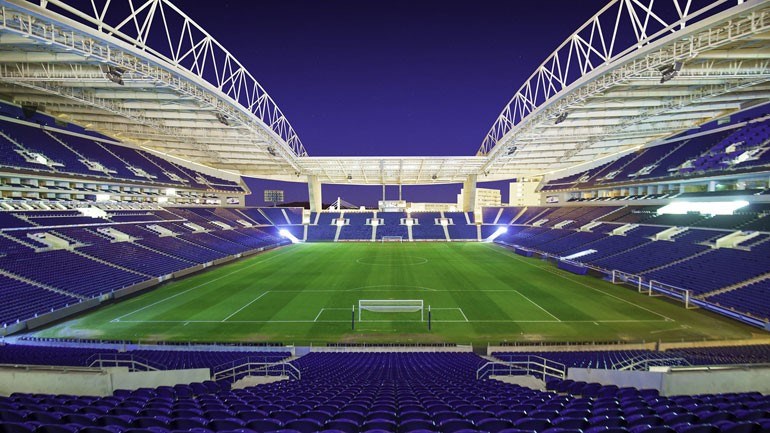The Dragon Stadium (Portuguese: Estádio do Dragão) is an all-seater football stadium located in Porto, Portugal, and the current home ground of Futebol Clube do Porto. It has a capacity of 50,033, making it the third largest football ground in Portugal.
Designed by Portuguese architect Manuel Salgado, the stadium was built to replace Porto’s previous ground, the Estádio das Antas, and was inaugurated on 16 November 2003 with a friendly match against Barcelona, which set an attendance record of 52,000 spectators. A UEFA category four stadium, it hosted UEFA Euro 2004 matches, including the opening, and has held several other international club competition and national team matches. It has also served as a concert venue to international musical artists, such as Coldplay, Muse and The Rolling Stones.
Construction and inauguration
Construction works began in late 2001, and were complete in November 2003, some months after what was expected, since in February 2002, Porto mayor Rui Rio changed the estate distribution, criticizing the plan for including high-scale housing and shopping for the area. These actions forced the chairman of FC Porto, Jorge Nuno Pinto da Costa, to halt all building operations, which were only resumed after a consensus was reached.
Designed by Portuguese architect Manuel Salgado and built by Portuguese contractor Somague, it cost €97,755,318, of which €18,430,956 was subsidized by the government. To help underwrite costs, each stand carries one or two sponsor names: Super Bock (south), tmn (east), meo (west), and Coca-Cola (north stand). Away fans are placed in the left corner of the north stand, while home Ultra groups, Super Dragões and Colectivo Ultras 95, occupy the south stand and the north stand, respectively, like on the old stadium.
The stadium was inaugurated on November 16, 2003, with a match against FC Barcelona, which featured the debut of a 16-year-old Lionel Messi in the Catalan side. Porto won 2–0 with goals by Derlei and Hugo Almeida. Due to severe turf problems, however, Porto was forced to return and play in the old Estádio das Antas, until the turf was replanted by mid-February 2004.
Naming
The stadium’s name is derived from the presence of a dragon on the club’s crest, which is composed of an old stitched leather football under the city’s coat of arms. It is also the nickname of the club’s football team. Other alternatives were considered, such as keeping the old name, Estádio das Antas (officially, unlike the former stadium), or name after former player Pinga, former manager José Maria Pedroto, or president Pinto da Costa (holding office since 1982).
Map
Source: Wikipedia


